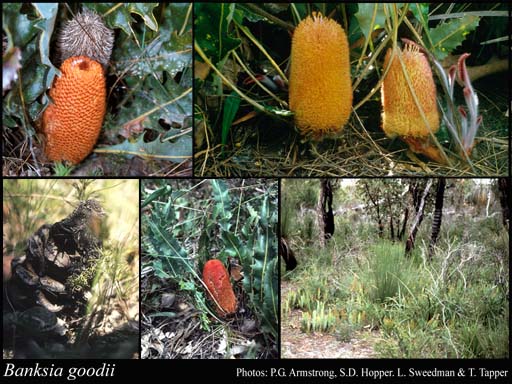- Reference
- Prodr. Suppl. 36 (1830)
- Conservation Code
-
Threatened
A taxon name retains its ‘Threatened’ status until a new name has been officially endorsed and appears in the Gazettal Notice.
- Naturalised Status
- Native to Western Australia
- Name Status
- Current
Lignotuberous, prostrate shrub, ca 0.2 m high. Fl. orange-brown-red, May or Nov. White or grey sand over laterite.

Scientific Description
Prostrate shrubs; branchlets hairy. Leaves petiolate, alternate, 120-330 mm long, 30-80 mm wide, hairy; petiole 30-210 mm long; lamina flat, more or less the same width throughout, once divided, pinnately divided, shallowly divided, teeth pointing outwards, with 12-24 lobes on each side, the margins flat. Inflorescences hirsute (with long, rough and coarse hairs), orange, red or brown; innermost bracts 12-15 mm long, hairy. Perianth 23-25 mm long, hairy, all over, limb apex hirsute (with long, rough and coarse hairs), without awns; pistil 28-32 mm long, curved, style glabrous. Follicles hairy, hirsute (with long, rough and coarse hairs), elliptic, 25-32 mm long. Flowers in May, June, July, August, September, October or November. Occurs in the South-west (SW) Botanical Province(s), in the Jarrah Forest (JF) IBRA subregion(s). : Conservation code Threatened (T).
Distribution
- IBRA Regions
- Jarrah Forest.
- IBRA Subregions
- Southern Jarrah Forest.
- IMCRA Regions
- WA South Coast.
- Local Government Areas (LGAs)
- Albany, Plantagenet.